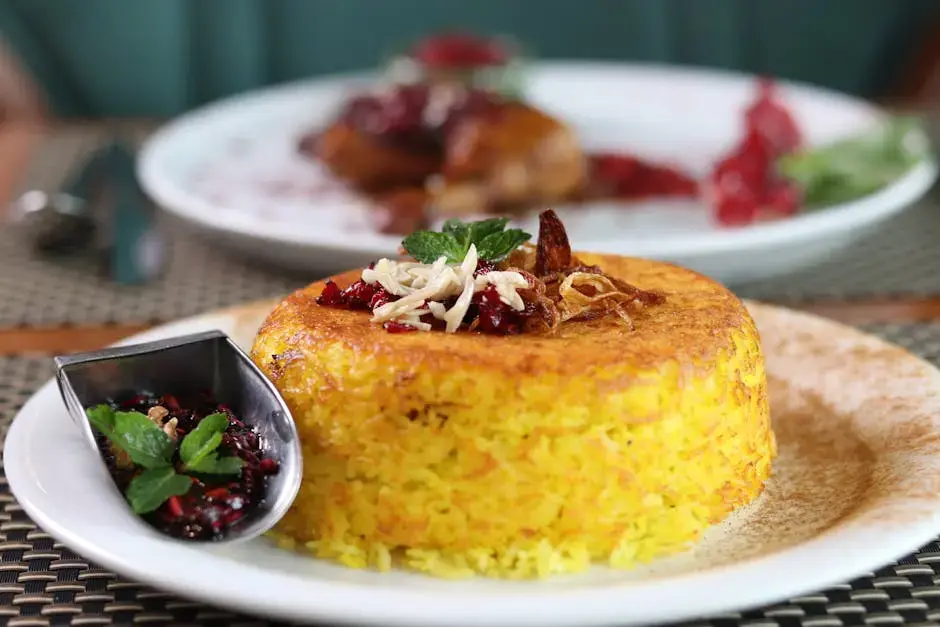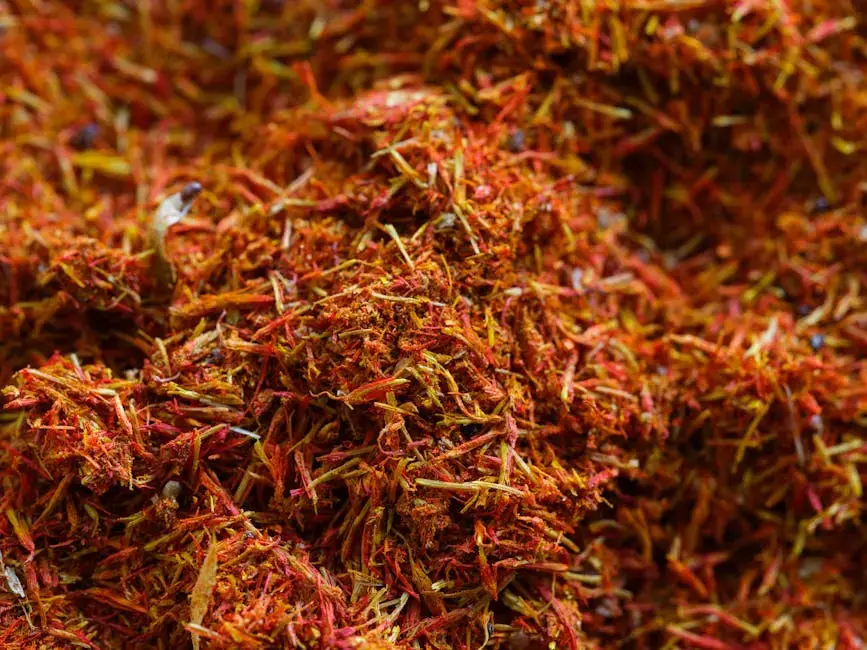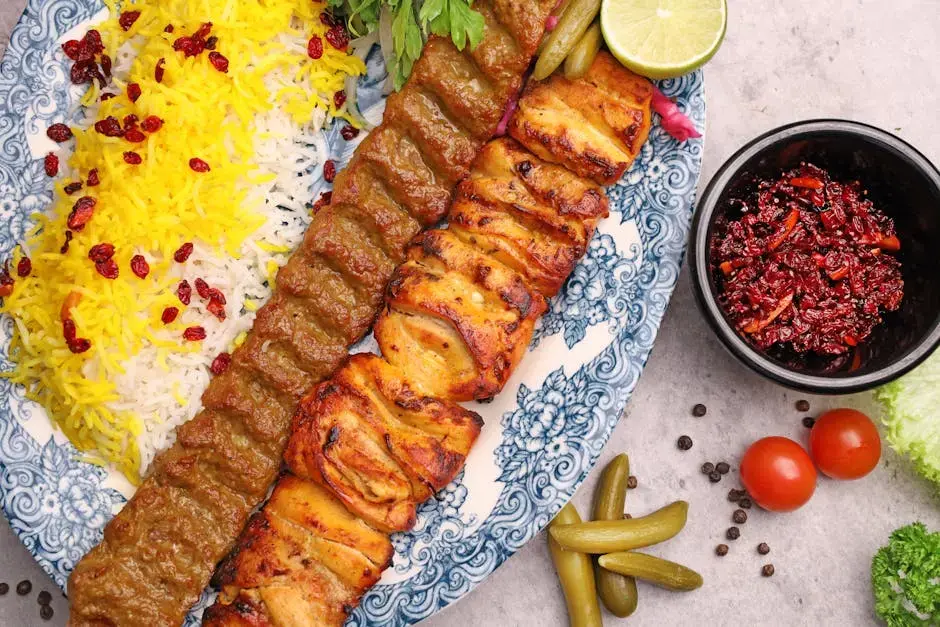A Guide to the Best Persian Vegetarian Dishes for Health Enthusiasts
- Chelo
- Mar 26
- 4 min read
Persian cuisine is a treasure trove of flavors and textures, offering a delightful mix of culinary wonders, many of which are perfect for vegetarian food lovers. Whether you're a health enthusiast or just curious about adding more variety to your meals, Persian vegetarian dishes provide a nutritious and delicious option. In this guide, we'll explore some of the best Persian vegetarian delights that promise to tantalize your taste buds while keeping your health goals in check.

The Rich Tradition of Persian Vegetarian Cuisine
Persian cuisine is deeply rooted in fresh, hearty, and aromatic ingredients. Vegetables, legumes, and grains play a starring role, often seasoned with a plethora of herbs and spices. This deep-rooted culinary tradition dates back centuries, reflecting a rich history influenced by various cultures such as the Greeks, Arabs, and Mongolians. Each of these influences has added layers of complexity to Persian vegetarian dishes, making them a flavorful testament to culinary artistry and cultural fusion.
Through generations, Iranian households have cherished vegetarian recipes passed down from one family member to another. These dishes, often celebrated during family gatherings and festivals, highlight the importance of community and shared meals. Rich in nutrients and vibrant in color, Persian vegetarian cuisine not only caters to the taste buds but also to the eyes and heart, creating a holistic dining experience. With an emphasis on fresh produce, meal preparation starts with a trip to the local bazaar, where vibrant vegetables and fragrant herbs promise a meal that bursts with flavor.
The Health Benefits of Persian Vegetarian Dishes
Rich in nutrients and flavors, Persian vegetarian dishes offer an array of health benefits. From being fiber-rich to antioxidant-packed, these meals contribute to a balanced diet. Discover how the ingredients commonly used in these dishes can support your health journey. For instance, many dishes are built around superfoods like pomegranates and walnuts, which are known for their heart-healthy properties and ability to boost brain function.
Additionally, the liberal use of herbs such as parsley, mint, and cilantro not only enhances flavor but also provides an abundance of vitamins and minerals essential for maintaining health. These ingredients contribute to reducing inflammation, improving digestion, and supporting immune function. Moreover, the use of legumes such as lentils and chickpeas in dishes like Adas Polo and Mirza Ghasemi provides a protein-packed alternative to meat, perfect for those seeking plant-based proteins without compromising on taste or texture.
Must-Try Persian Vegetarian Dishes
Dive into some of the most popular Persian vegetarian dishes you can easily make at home. Explore the flavors of dishes like Ghormeh Sabzi, Kashk-e Bademjan, and Adas Polo, each offering unique taste profiles with their blend of herbs, spices, and ingredients. A dish like Ghormeh Sabzi, for instance, is a magnificent melange of herbs, kidney beans, and citrus flavors, creating an irresistible aroma and taste.
Another staple, Kashk-e Bademjan, is a luscious eggplant dip that comes alive with the tanginess of fermented whey sauce called 'kashk.' The depth of flavor in this dish is a testament to the transformative power of simple ingredients. Or try Adas Polo, a comforting dish that combines rice with lentils, raisins, and spices, creating a sweet and savory harmony that's both satisfying and wholesome. These dishes not only celebrate the robustness of Persian flavors but also provide a versatile base for a plant-centric diet.
If you're craving a bit of crunch, Saffron Rice with Barberries and Pistachios will delight with its sweet and tangy notes. Barberries, which are high in vitamin C, add a burst of tartness, while pistachios provide a satisfying crunch, making this dish both nutritious and pleasurable to eat. For a simple yet delightful treat, try Noon Panir Sabzi, a traditional Persian snack comprising fresh bread, feta cheese, and herbs; it's a quick way to enjoy the essential flavors of Persia.
Adapting Persian Recipes to Fit Dietary Preferences
While Persian recipes are traditionally rich in flavor, they can be easily adapted to suit various dietary needs. Whether you prefer gluten-free, vegan, or low-calorie options, this section provides tips on modifying classic recipes without losing their authentic taste. For instance, many Persian stews can be thickened with cornstarch instead of flour for a gluten-free alternative. Similarly, using nutritional yeast instead of cheese or yogurt can turn dishes vegan-friendly while maintaining a creamy texture and savory profile.
For those watching their caloric intake, reducing or replacing oil with alternatives such as water or broth when sautéing can immensely cut down calories without sacrificing flavor. Additionally, the use of quinoa instead of rice in dishes like Adas Polo provides a protein-rich, gluten-free alternative that adds a welcome nutty flavor. These small adjustments allow you to enjoy Persian culinary delights while adhering to your personal dietary requirements, ensuring that healthy eating remains a flavorful endeavor.
Cooking Tips for Perfect Persian Dishes
Get the most out of your Persian cooking experience with these essential tips. Learn about the importance of fresh ingredients, the art of seasoning, and insider secrets to achieving the perfect texture and taste. Persian cooking is all about balance and timing, so patience in waiting for flavors to meld is key. Start by investing in fresh herbs, as they are the backbone of Persian cuisine. Whether it’s parsley, mint, or dill, fresh herbs can transform a dish from simple to sensational.
Incorporate saffron—the jewel of Persian spices—correctly by blooming it in hot water to release its full aroma and color. Just a few strands can infuse a dish with its distinctive golden hue and luxurious fragrance. Additionally, understanding the balance of sweet and sour flavors is paramount. Using ingredients like pomegranate molasses or lemon juice can brighten dishes and add layers of complexity. Lastly, never rush the slow-cooking process; it's vital for dishes like Ghormeh Sabzi and Fesenjan, where ingredients need time to integrate fully, developing depth and nuance in flavor.
Embrace the Flavorful World of Persian Vegetarian Cuisine
Exploring Persian vegetarian dishes opens up a world of rich flavors and nutritious options for health enthusiasts. These dishes not only promise to be a feast for your senses but also align with your wellness goals, making them perfect additions to your culinary repertoire. So, why not embark on a Persian culinary journey and enjoy the diverse and vibrant tastes it offers? To embark on your own Persian culinary adventure, check out our homepage for more inspiration.




Comments